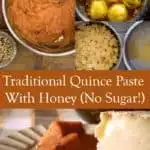
Stewed quince with honey is a recipe of ancient origin, appearing in Roman cookbooks in the late 4th or early 5th century.
Then along came sugar. And it changed everything.
Traditions were lost and new ones were made, making sweetness love at first bite.
Yet, the health risks of eating too much sugar are evident. Around the year 1700, people were eating, on average, about 4.9 grams of sugar a day (4 lbs. per year).
In modern day times, sugar statistics show that the average American consumes 71 grams of sugar every day – that’s 57 pounds a year! Quite an increase and a change in flavor.
But one has to ask, does sugar taste nearly as good as honey?
And how much sweetness do you really need in your life?
In the case of quince, you’ll find that it is already bursting with the aroma of autumn and you will need to add very little. Then you are free to enjoy a generous slice of quince paste, bite after bite.
How to make quince paste
Quince paste is also called quince cheese, just as often as it is referred to as dulce de membrillo in Spanish, marmelada in Portuguese, pâte de coing in French and cotognata in Italian.
Whatever name you choose to call it by, it is sure to become a quince favorite that will be requested year after year.
Plus, learning how to deal with a tough quince will only increase your food preservation skills and indulge in your love for a well-stocked pantry.
To make quince paste you will need a quince tree of your own (if you have one consider yourself extremely lucky!), or the ability to find them locally.
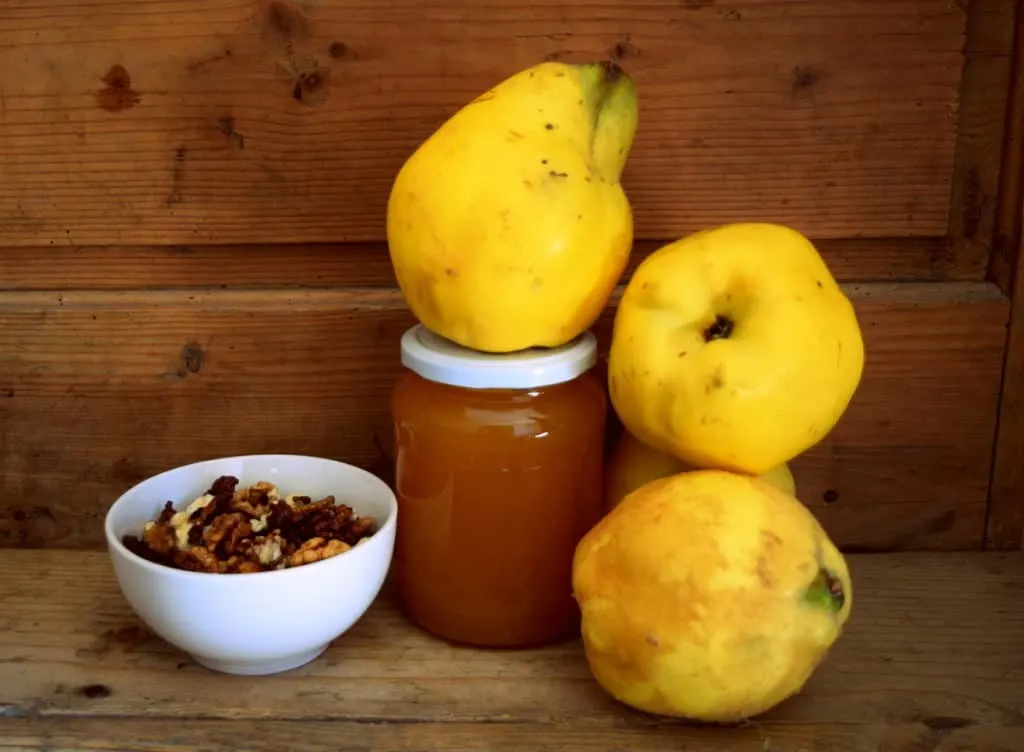
Ingredients for quince paste
A proper fruit cheese requires few ingredients:
- 2 lbs. quince (about 5-6 medium size quinces)
- honey (to be measured after quince is pureed)
- lemon, optional
- 1 cup mixed walnuts (try harvesting your own) and hazelnuts, chopped, optional
Prep time may take longer than with other fruits, due to the toughness of the quince. Allow for 30 minutes to cut up the quince, 1-1.5 hours for cooking.
Gather all ingredients, along with your cutting strength and get started!
Selecting and washing the quince
The best, most ripe quinces should be calling out to you – don’t fall for them if they are slightly green and not ripe off the tree.
Choose quinces that are free from major blemishes, bruises or other signs of damage.
They should be golden yellow with a characteristic quince fragrance, sniff them like you would a cantaloupe to discover the ripest ones.
Quinces are rock hard, slightly fuzzy and tart. Cooking makes them enticingly edible, but first you will need to wash them thoroughly.
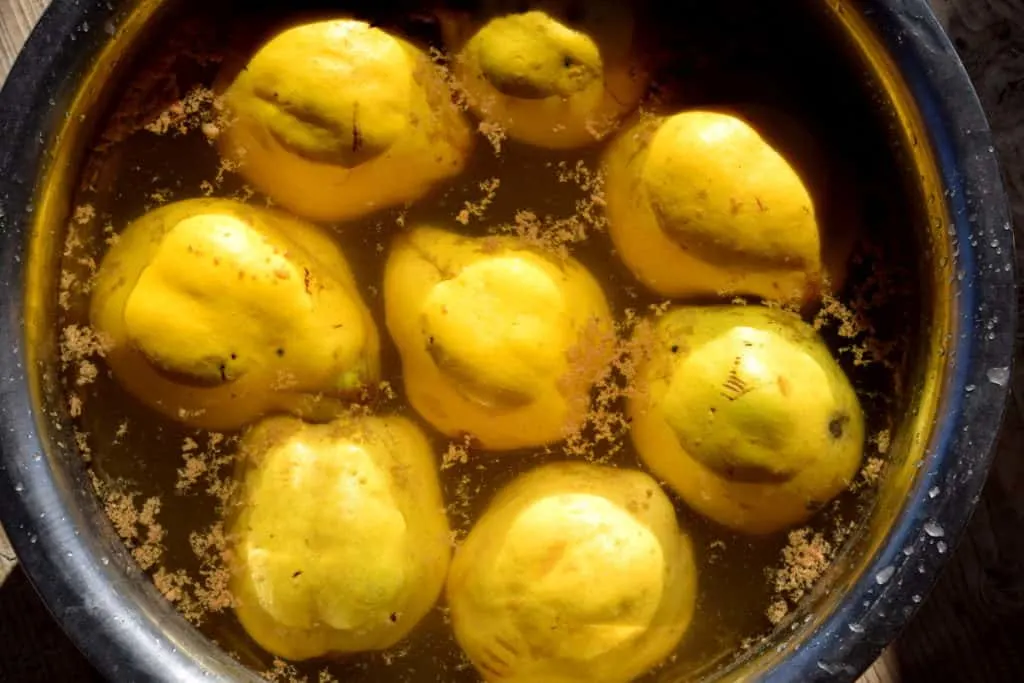
Cutting and chopping
With a steady hand and a sharp knife, start peeling the quince and set the peels aside for making quince jelly.
Chop the quince and add the cores to either the jelly pot, or the compost. Bite-sized pieces should be enough, for after some time on the stove, they will be mashed and pureed, ready for further cooking.
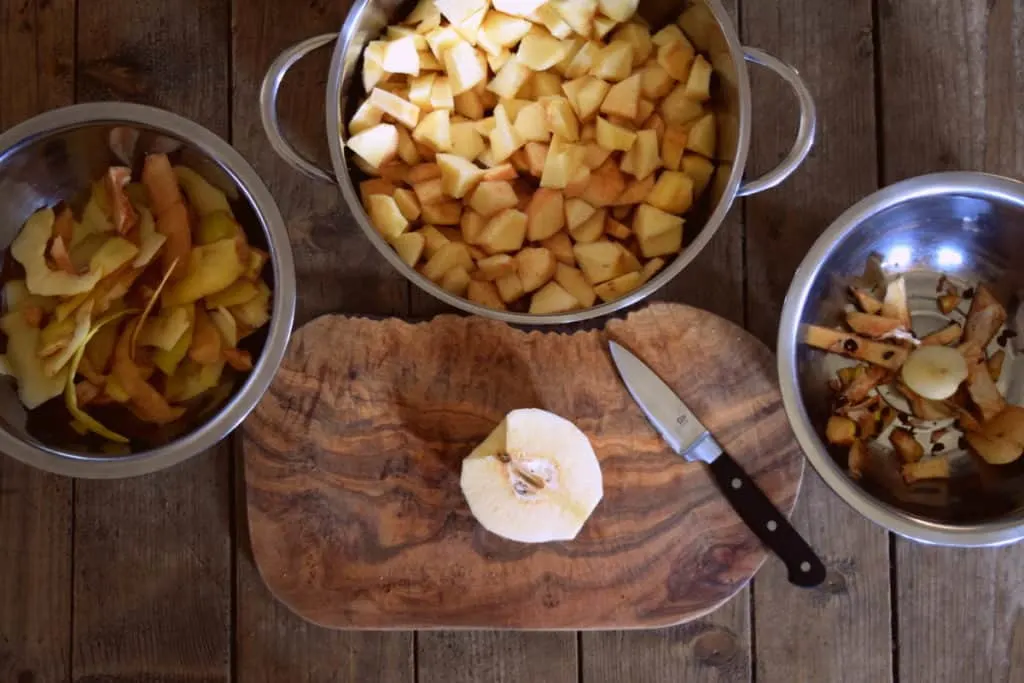
Cooking the quince
Cover the quince pieces with water and bring to a boil. Continue to cook until they are very soft.
Once they are of a mashable consistency, strain off the liquid and reserve for the quince jelly (or compote if you have a glut of quince to preserve).
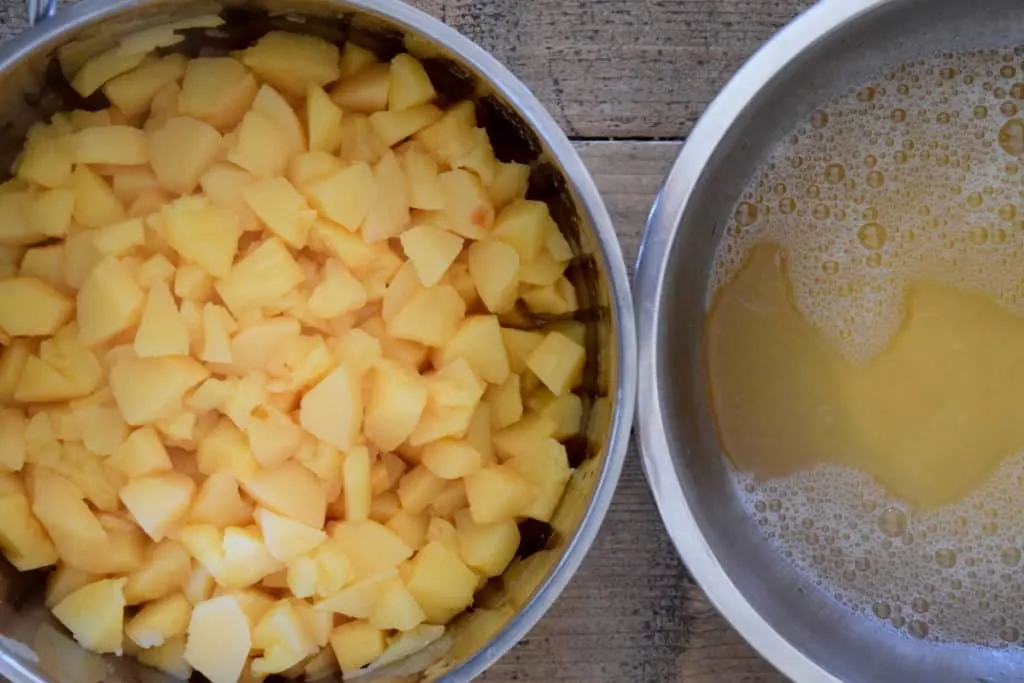
There are two ways to process the quince further. First is the low-tech option: to blend with a potato masher.
Alternatively, you can puree the quince in a food processor. The masher will leave the quince paste with more texture, the latter proves to be super homogeneous. Since we added chopped nuts, the masher worked out wonderfully in harmonizing textures.
Once the quince is pureed, measure the amount (in weight or volume), then add 3/4 of that amount of honey to the pot.
If you have 1 lb. of quince puree, add 12 oz. of honey.
Mix honey and quince together, cooking over low to medium heat for 45-60 minutes, stirring often. If you are adding the juice of 1 small lemon, now is the time to do it.
Cook the quince long enough, and the color will start to magically change.
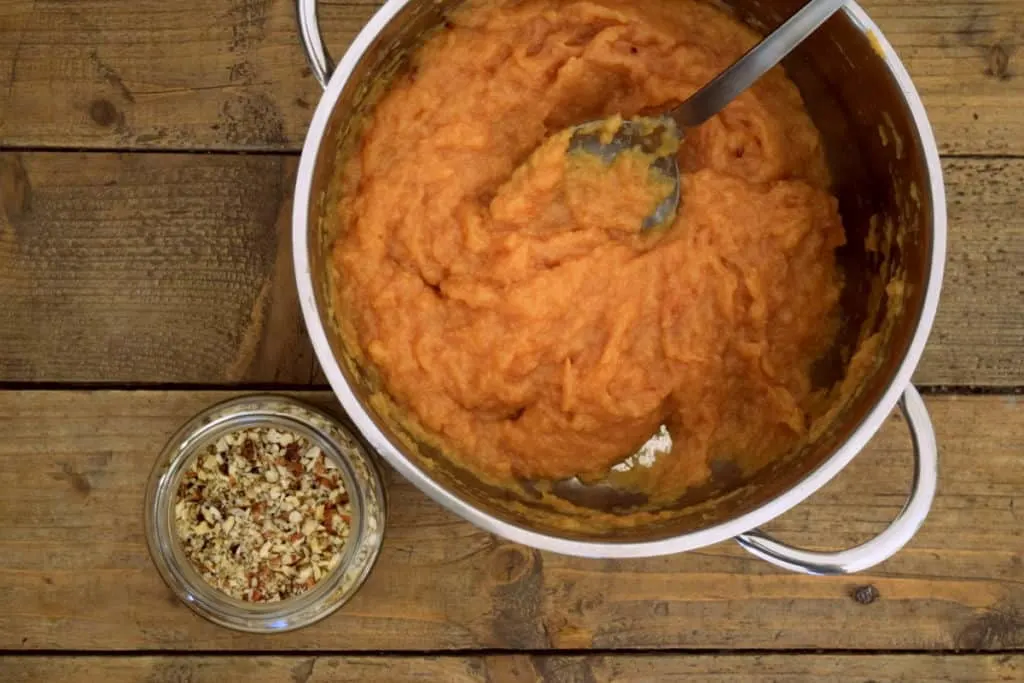
Adding in any extra ingredients
Once the paste has begun to thicken and turn a deeper orange-pinkish color, it is time to add the nuts, cinnamon, vanilla or whatever spices you like.
When a spoon stands up in the paste, without falling over, and the puree pulls away from the side of the pot, it is time to take it off the stove.
With the help of a spoon or spatula, fill a dish to the brim with the already delicious quince paste. Lining it with parchment paper if you wish to remove it for further hardening.
It will set within 24 hours in a chilled room, even faster in the fridge. Then you can invert the quince cheese onto a platter if you choose.
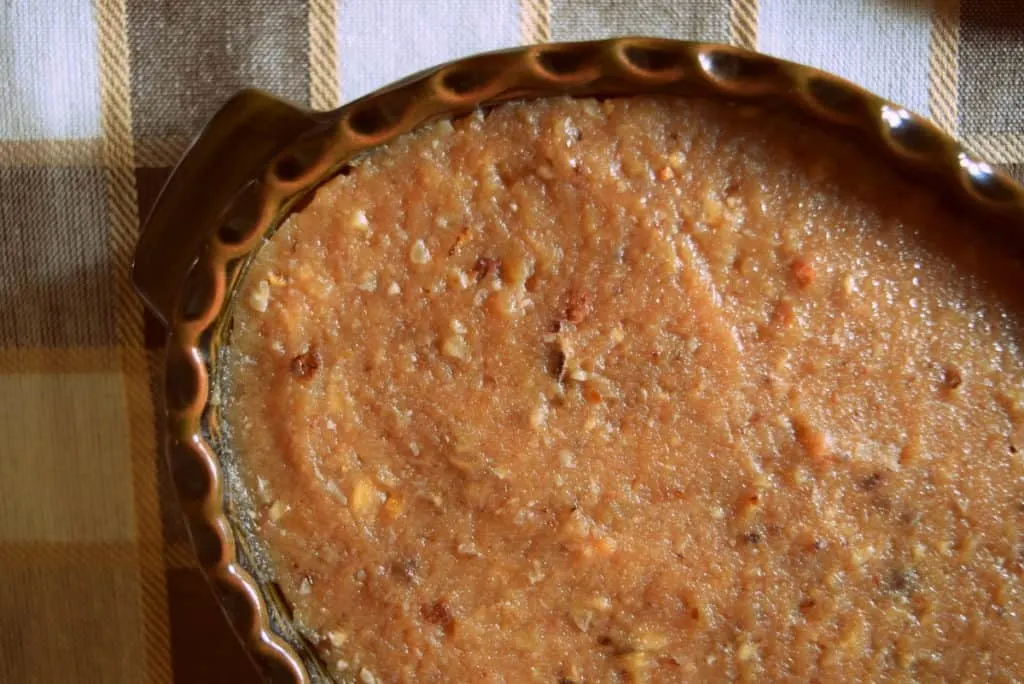
Slicing into your quince paste
It is hard to wait with digging into such a beautiful paste, though it has been said that optimum flavors develop in 4-6 weeks.
Refrain from the craving to dive right in, let it mature for at least a month and dive into a jar of homemade apricot jam instead. Save some quince paste for later and refrigerate it.
Consume within 6 months – if it can last that long!
What to serve quince paste with
Fruit cheeses are simply reduced jams, or pastes, and should be able to hold their shape, yet still be spreadable. At some point in history, they were even pressed in fancy molds with engravings.
Today, a humble ceramic dish will do.
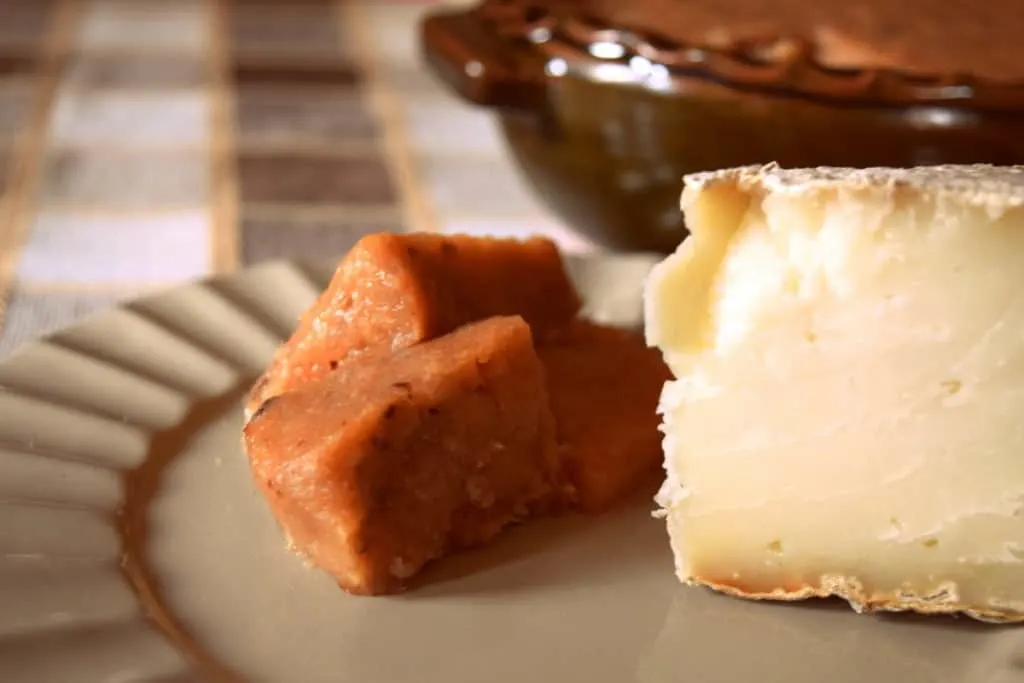
A solid little cube of honey-sweetened quince paste tastes amazing on its own, though a slice of manchengo sheep cheese will add a certain depth to the quince.
Aged goat cheese also makes for a wonderful accompaniment, as does a dollop of creamy brie. Homemade crackers, fresh walnuts and a platter of meats make for a festive holiday board on the dining room table.
No matter how you slice it, spoon it or spread it, quince paste with honey will soon become a family favorite. Keep passing the wise, old traditions along!
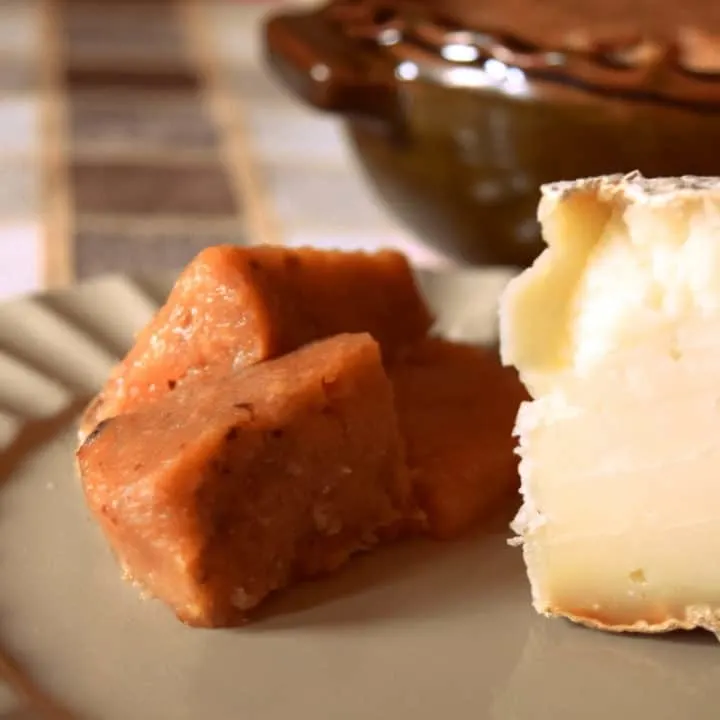
Traditional Quince Paste With Honey (No Sugar!)
Quince paste is also called quince cheese, just as often as it is referred to as dulce de membrillo in Spanish, marmelada in Portuguese, pâte de coing in French and cotognata in Italian.
Whatever name you choose to call it by, it is sure to become a quince favorite that will be requested year after year.
Ingredients
- 2 lbs. quince (about 5-6 medium size quinces)
- honey (to be measured after quince is pureed)
- lemon, optional
- 1 cup mixed walnuts and hazelnuts, chopped, optional
Instructions
- Choose quinces that are free from major blemishes, bruises or other signs of damage.
- Peel the quince and discard the peels for making quince jelly later. Chop the quince into bite sized pieces and discard the cores.
- Cover the quince pieces with water and bring to a boil. Continue to cook until they are very soft.
- Once they are of a mashable consistency, strain off the liquid and reserve for the quince jelly (or compote if you have a glut of quince to preserve).
- Process the quince with a potato masher or in a food processor.
- Once the quince is pureed, measure the amount (in weight or volume), then add 3/4 of that amount of honey to the pot.
- Mix honey and quince together, cooking over low to medium heat for 45-60 minutes, stirring often. If you are adding the juice of 1 small lemon, now is the time to do it.
- Once the paste has begun to thicken and turn a deeper orange-pinkish color, it is time to add the nuts, cinnamon, vanilla or whatever spices you like.
- When a spoon stands up in the paste, without falling over, and the puree pulls away from the side of the pot, it is time to take it off the stove.
- With the help of a spoon or spatula, fill a dish to the brim with the already delicious quince paste. Lining it with parchment paper if you wish to remove it for further hardening. It will set within 24 hours in a chilled room, even faster in the fridge. Then you can invert the quince cheese onto a platter if you choose.
- You can dig in straight away, but allowing 4-6 weeks really allows the flavor to develop.
Pin This To Save For Later
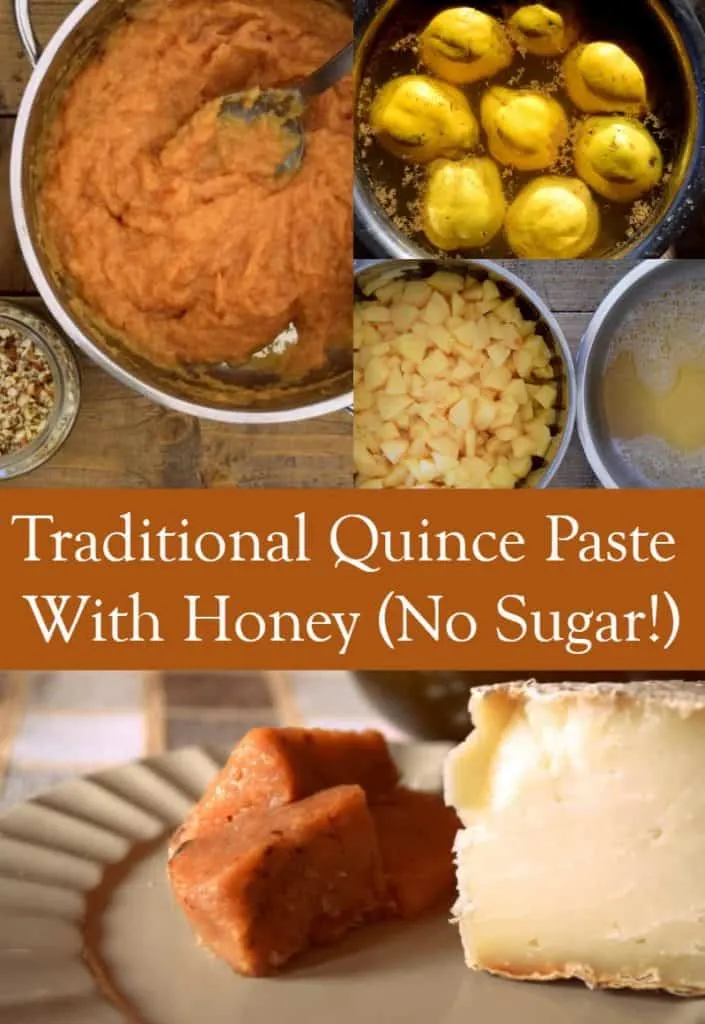

Get the famous Rural Sprout newsletter delivered to your inbox.
Including Sunday musings from our editor, Tracey, as well as “What’s Up Wednesday” our roundup of what’s in season and new article updates and alerts.


